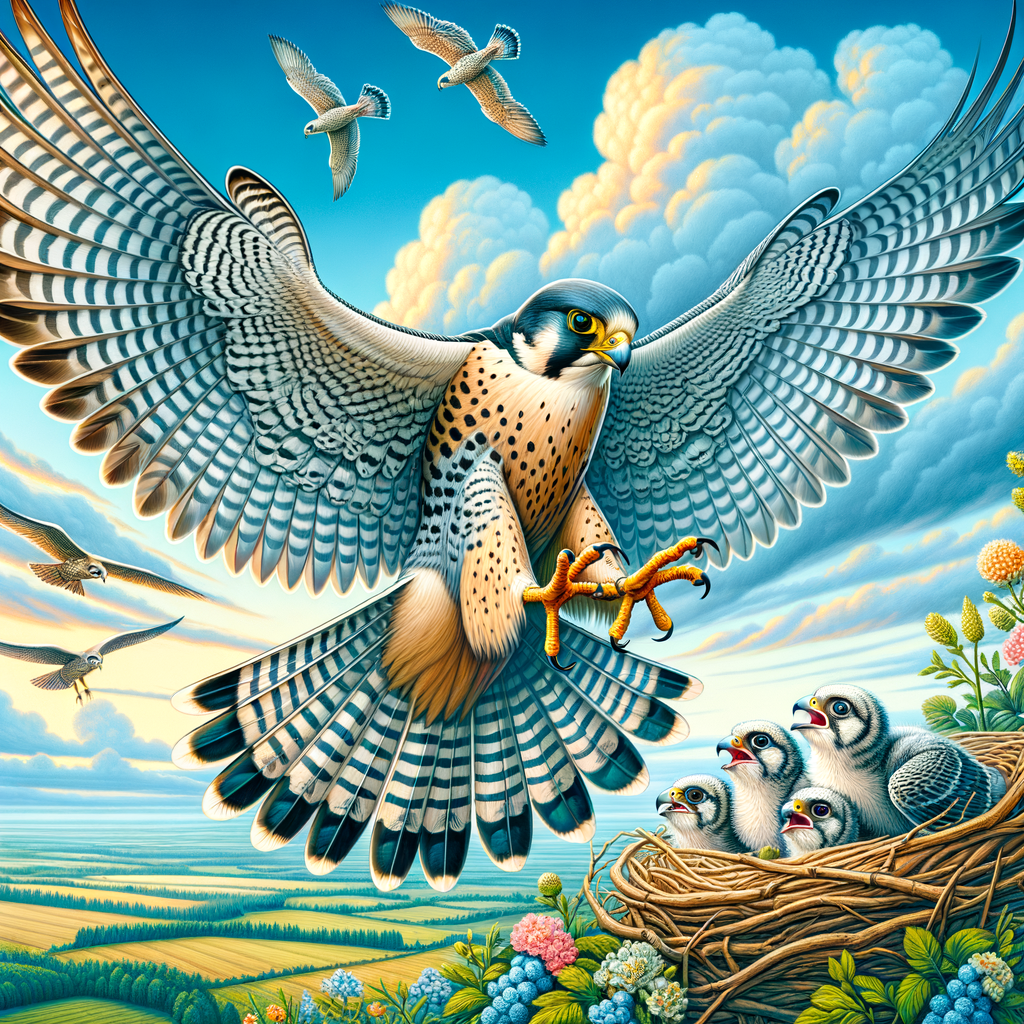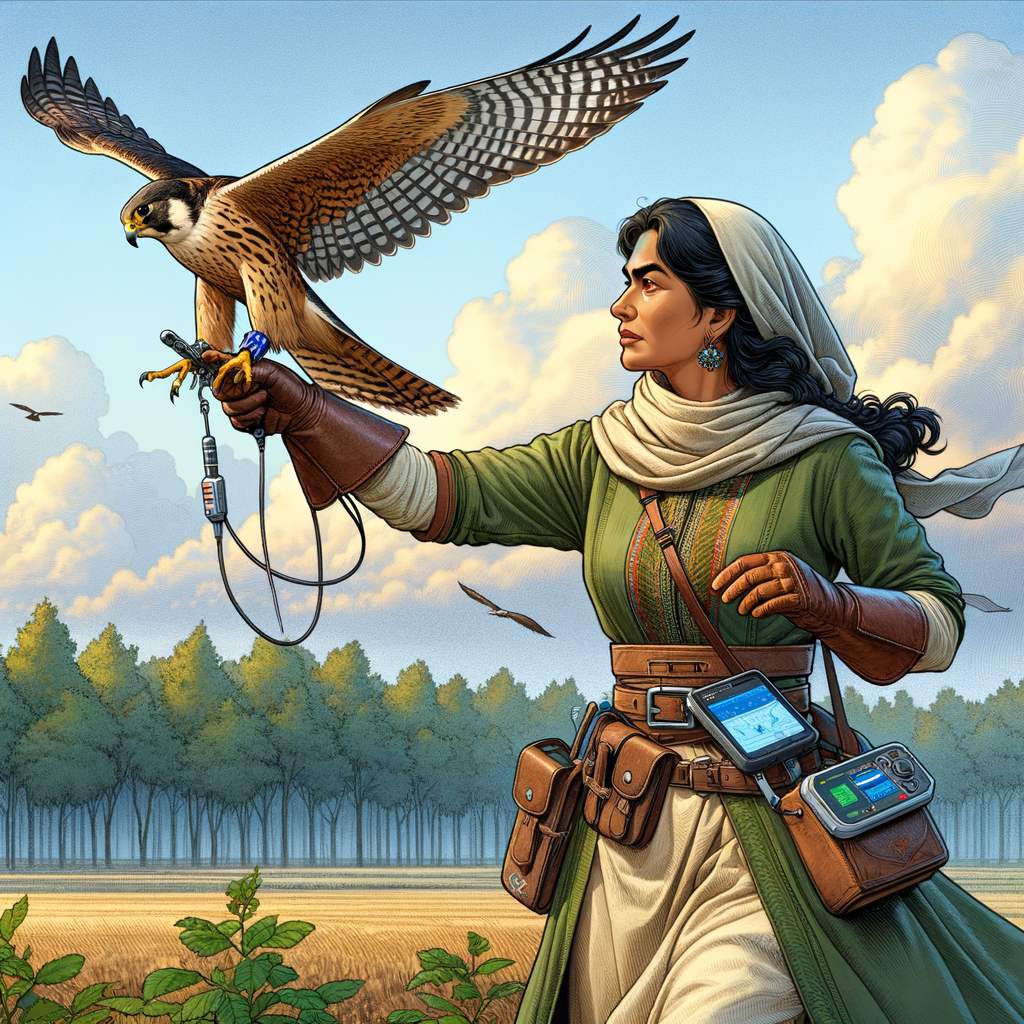Understanding Falcon Behavior
Falconry Bond: Building a strong, trusting relationship with your falcon is key. This bond helps in training and working together.
Behavior Patterns: Falcons have specific behavior patterns. Observing their habits helps in understanding their needs and moods.
Communication Techniques: Learn how to communicate with your falcon using body language and vocal cues. This improves training and trust.
Hunting Instincts: Falcons have strong hunting instincts. Recognizing these instincts and working with them can enhance training and hunting experiences.
Environment Adaptation: Falcons can adapt to different environments, but they have preferences. Provide them with a suitable habitat for their well-being.
Training Patience: Training a falcon requires patience and consistency. Short, regular training sessions are more effective than long, infrequent ones.
Diet and Health: A balanced diet and regular health check-ups are essential for a falcon’s well-being. Proper nutrition affects their behavior and performance.
Handling Stress: Falcons can get stressed easily. Understanding and minimizing stress triggers can lead to a happier, healthier bird.
Caretaking Responsibilities: Taking care of a falcon involves daily responsibilities, including feeding, cleaning, and monitoring their health.
Flight Practice: Regular flight practice is crucial. It keeps your falcon fit and sharpens their hunting skills.
Behavioral Changes: Be aware of any changes in behavior as they can indicate health issues or stress. Prompt attention to these signs is important.
Enrichment Activities: Engage your falcon in various enrichment activities to keep them mentally stimulated and happy.
Discovering Falcon Behavior: The Key to Mastering Falconry
Imagine you’re in Ireland, walking through the lush green hills. You spot a sheepdog guiding a flock of sheep with swift, precise movements. The dog’s keen understanding of the sheep’s behavior leads the pack easily, making the tough job look effortless. Just like the sheepdog knows its flock, understanding a falcon’s behavior is crucial for anyone passionate about falconry.
We’re about to take you on a journey where you’ll dive deep into the mindset of these magnificent birds of prey. By gaining this insight, you’ll form an unbreakable bond with your feathered companion and truly master the art of falconry. Keep reading, and you’ll unlock the secrets to recognizing their moods, signals, and habits. Let’s explore why understanding falcon behavior is not just important, but absolutely essential for anyone who treasures these incredible birds.
Decoding Falcon Behavior: An Insight into Understanding Falcons
Understanding falcon behavior is like learning a new language. By ‘reading falcon signals’ and understanding falcons, you can build a strong bond with these magnificent birds. Falcons, being birds of prey, have specific behaviors that are essential for their survival. For those new to falconry, knowing ‘What is the easiest hawk to train?’ can significantly smooth out the learning process and get you off to a good start.
Falcon Behavior: What You Need to Know
Knowing how falcons behave is crucial. Falcons use their body language and calls to communicate numerous things, such as moods, needs, and even health conditions. By observing these signals closely, you can infer when a falcon is hungry, frightened, or content.
Key Falcon Signals to Watch
- Eye Movements: Rapid eye movements can indicate alertness or nervousness. Calm, steady eyes usually mean the falcon is relaxed.
- Feather Fluffing: When a falcon fluffs its feathers, it often means it is either trying to keep warm or is feeling comfortable in its environment.
- Tail Fanning: Spreading and fanning the tail can be a sign that the falcon is about to take flight or is showing excitement.
For those just starting out, falconry for beginners can provide useful tips on how to get acquainted with these behaviors.
Training Techniques
Training a falcon involves patience and a thorough understanding of their nature. Positive reinforcement is a cornerstone of effective training. Techniques such as basic training techniques and advanced training methods can be very helpful.
The Easiest Hawk to Train
One frequently asked question is: ‘What is the easiest hawk to train?’ For beginners, the Red-tailed Hawk is often recommended. This species is known for its trainability and resilience, making it a popular choice for novices.
Understanding the different types of falcons and hawks can also steer you in the right direction. For more about these incredible birds, visit species of falcons.
Falconry Equipment
Having the right equipment is equally important. Essentials like falconry gloves, jesses and leashes, and hoods are essential for both safety and effective training.
Advanced Reading and Resources
For those looking to deepen their knowledge, reading historical texts and contemporary manuals can be incredibly beneficial. Check out our selection of falconry books for both beginners and seasoned falconers alike.
Continue to explore advanced techniques and broaden your understanding by diving into comprehensive resources on the history of falconry and modern practices in falconry technology.
By getting familiar with the behavior of your falcon, reading falcon signals, and understanding their needs, you’re setting the groundwork for a rewarding journey in falconry.
Understanding Falcon Behavior
Falcons are some of the most fascinating birds of prey, and learning about their behavior can give us insights into their remarkable lives. Here are some interesting aspects of falcon behavior observed recently:
Courtship and Nesting
Peregrine falcons have shown some intricate courtship behaviors. Live streams have captured these amazing moments:
- Mutual Ledge Displays: Both falcons often present themselves on ledges, moving softly and making sure their potential mates notice them.
- Head-Low Postures: One common courtship gesture includes bowing their heads low, signaling their interest.
Here is a simple table summarizing their diet during courtship:
| Food Type | Examples |
|---|---|
| Birds | Pigeons, songbirds, other flyers |
| Nest Feeds | Bones from past meals |
Breeding and Fledging
The Peregrine FalconCam season of 2024 has been particularly fruitful. One of the notable pairs, Carla and Ecco, successfully raised their chicks. The chicks showed incredible progress as they ventured into the world:
- First Flights: The young falcons, called eyases, made their first flights around the University of Pittsburgh’s Cathedral of Learning.
- Parental Supervision: These young falcons remain under the watchful eyes of their parents for up to six weeks before exploring independently.
Play and Exploration
An island species known as the Striated Caracara displayed some interesting behaviors that suggest a higher level of cognitive ability than previously thought:
- Natural Object Play: These falcons engage in playful activities such as catching and releasing objects they find in their environment.
- Complex Shape Interaction: They also play with objects that have more complex shapes, which might contribute to their problem-solving skills.
Below is a comparison table summarizing observed behaviors:
| Falcon Species | Key Behaviors | Purpose |
|---|---|---|
| Peregrine Falcons | Head-low postures, mutual ledge displays | Courtship |
| Striated Caracara | Playing with natural objects and shapes | Cognitive development and adaptation |
Understanding these behaviors not only deepens our appreciation for these magnificent birds but also helps in their conservation and study. Observations and research are ongoing, enriching our knowledge about their life and habits.
These observations are based on the latest data and have been gathered to provide an engaging and informative look into the behaviors of falcons as seen in 2024. Enjoy exploring their world with Learn Falconry!
Final Thoughts on Understanding Falcon Behavior
Understanding falcon behavior is like unlocking a treasure chest of fascinating natural wonders. These incredible birds exhibit a wide range of behaviors that showcase their intelligence and adaptability. From the dramatic courtship displays of Peregrine falcons to the playful antics of the Striated Caracara, each species has unique ways of interacting with the world around them.
In 2024, we have observed more about their courtship, nesting, breeding, and fledging habits. For example, falcons such as Peregrine falcons feed their chicks pigeons and other birds, while the chicks learn to fly and explore their territory. The Striated Caracara’s playful behavior helps them develop crucial survival skills.
By paying close attention to these behaviors, we can better appreciate the complexities of falcon life and support efforts to protect these magnificent birds. Whether you’re a seasoned falconer or just starting your journey, there’s always more to learn and enjoy about our feathered friends. So, keep observing, stay curious, and let the fascinating world of falconry continue to inspire you!



